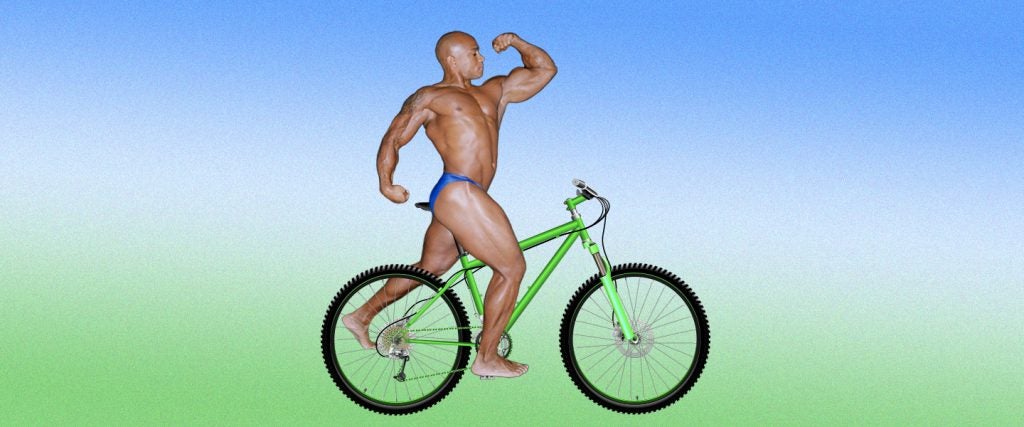When I consider the effects of biking on human anatomy, I immediately recall an interview I conducted years ago with National Fat Bike Champion Danielle Musto. During that discussion, I asked her about the weightlifting she engaged in to supplement the on-bike portion of her training regimen. She specifically mentioned having to perform lunges and Bulgarian split squats to develop her glutes, because cycling was such a quad-dominant activity that it left an imbalance in other parts of her legs.
That surprised me because I’d always thought that biking left you with tree trunks for lower limbs — no matter the muscle group. But it turns out that I couldn’t have been more wrong.
So biking doesn’t do anything other than leave you with jacked quads?
In fairness, biking does benefit all muscle groups within the leg, but it doesn’t develop them evenly, or with the same emphasis. This is because different segments of the leg play different roles during the pedal-pumping movement. The glutes are essential in the very early stages, but your quads and hamstrings provide the bulk of the propulsive force when real muscular might is required, with the hamstrings also involved in the recovery phase.
That said, there are still obvious limitations to the amount of muscle you can amass in your legs just by pedaling a bicycle around — no matter how fast you pedal it.
Are you sure you can’t develop huge legs simply by riding a bike a lot?
All I know is that I’ve never met a single person whose massive legs were solely the result of a paper route.
This is one of the frequent trade-offs to endurance-boosting activities like cycling, swimming, rowing and running. After a certain length of time, the size and weight of the object being propelled forward — in this case, your body — doesn’t change all that much (unlike, say, a weight bar that you can load up with a bunch more plates).
Case in point: the body of Lance Armstrong. I know, he’s a big cheater, but so was everyone else who was even remotely competitive in the Tour de France during that era. Whatever. We can debate the competitive landscape of the 1990s and 2000s Tour de France races another time. The point is, Armstrong admitted to taking an assortment of performance-enhancing substances during his career, including EPO, testosterone, human growth hormone and cortisone. While this combination of chemicals enabled him to capture an unprecedented seven consecutive Tour de France victories, he never weighed more than 165 pounds during any of those wins.
If the guy who maybe had as many testosterone-boosting and muscle-building substances in his system as anyone else riding a bicycle failed to develop enormous lower body musculature, then there are no guarantees that cycling is going to build huge legs for you. Basically, something beyond bicycling is necessary to build the type of leg muscles that draw major attention.
But I’ve definitely seen some cyclists with huge legs!
Chances are, you’re thinking of someone who specializes in sprint cycling. Most of the hardcore competitive cyclists specialize in endurance races — even the shortest stages of the Tour de France are eight and 25 miles respectively — whereas most sprint cyclists participate in match-race cycling, which is a three-lap, 600-meter race where only the final 200-meter lap is timed. In those races, the competitors often creep around the track at very slow speeds for the first length and a half to position themselves, conserve energy and build toward an all-out flurry of activity in the 200-meter finale.
The periods of peak exertion seldom last longer than 20 seconds, so competitors spend a great deal of time in the gym executing heavy squats and other explosive movements to develop hellacious lower body strength capable of otherworldly power during those brief stages of all-out expenditure. So while some of the leg bulk is developed through sprint-specific training on a bike, the predominant muscle-building elements are performed in the weight room.
Those are the pros, though. What can I expect biking to do for me if it’s my only form of leg exercise?
You’re gonna end up with a pair of toned gams that might not be big enough to win any local bodybuilding competitions, but will definitely look great in a pair of very trendy short shorts.

